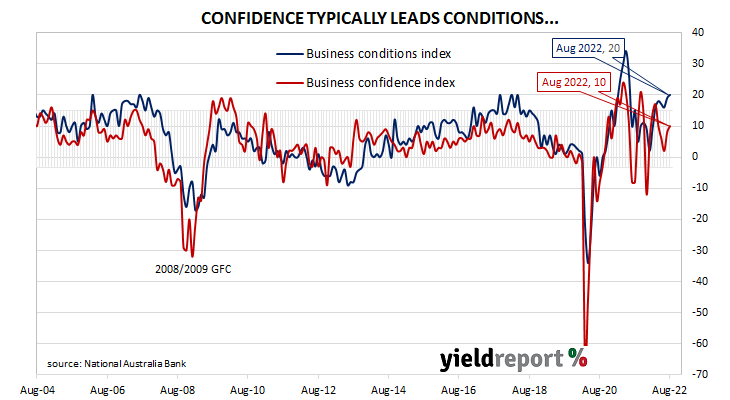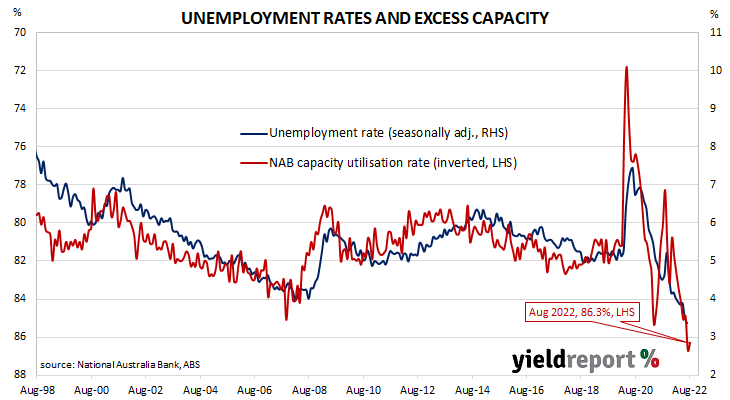Summary: Business conditions improve in August, at elevated level; confidence also improves, modestly above long-term average; strong conditions across most industries, more positive outlook prevailing despite rate rises; capacity utilisation rate declines, all 8 sectors of economy still above respective long-run averages.
NAB’s business survey indicated Australian business conditions were robust in the first half of 2018, with a cyclical-peak reached in April of that year. Readings from NAB’s index then began to slip and forecasts of a slowdown in the domestic economy began to emerge in the first half of 2019 as the index trended lower. It hit a nadir in April 2020 as pandemic restrictions were introduced but then conditions improved markedly over the next twelve months. Readings have been generally in a historically-normal range since then.
According to NAB’s latest monthly business survey of over 500 firms conducted over the last week of August, business conditions have improved a touch, maintaining an elevated reading. NAB’s conditions index registered 20, up from July’s revised reading of 19.
Business confidence also improved. NAB’s confidence index rose from July’s revised reading of 8 to 10, a reading which is modestly above the long-term average. Typically, NAB’s confidence index leads the conditions index by one month, although some divergences have appeared from time to time.
“Overall, the survey indicates that demand remained strong through August,” said NAB Chief Economist Alan Oster.
Commonwealth Government bond yields moved lower on the day. By the close of business, the 3-year ACGB yield had lost 4bps to 3.20%, the 10-year yield had shed 6bps to 3.58% while the 20-year yield finished 3bps lower at 3.90%.
In the cash futures market, expectations of higher rates firmed a touch. At the end of the day, contracts implied the cash rate would rise from the current rate of 2.31% to 2.59% in October and then increase to 2.92% by November. May 2023 contracts implied a 3.545% cash rate and August 2023 contracts implied 3.555%.
Oster noted strong conditions across most industries with the exception of the construction sector “where profitability remains a challenge.” He also said the dampening effect of interest rate rises on confidence had “eased and a more positive outlook is prevailing, at least for the time being.”
NAB’s measure of national capacity utilisation remained at an historically-elevated level even as it declined from July’s figure of 86.7% to 86.3%. However, all eight sectors of the economy were still reported to be operating above their respective long-run averages.
Capacity utilisation is generally accepted as an indicator of future investment expenditure and it also has a strong inverse relationship with the unemployment rate.



